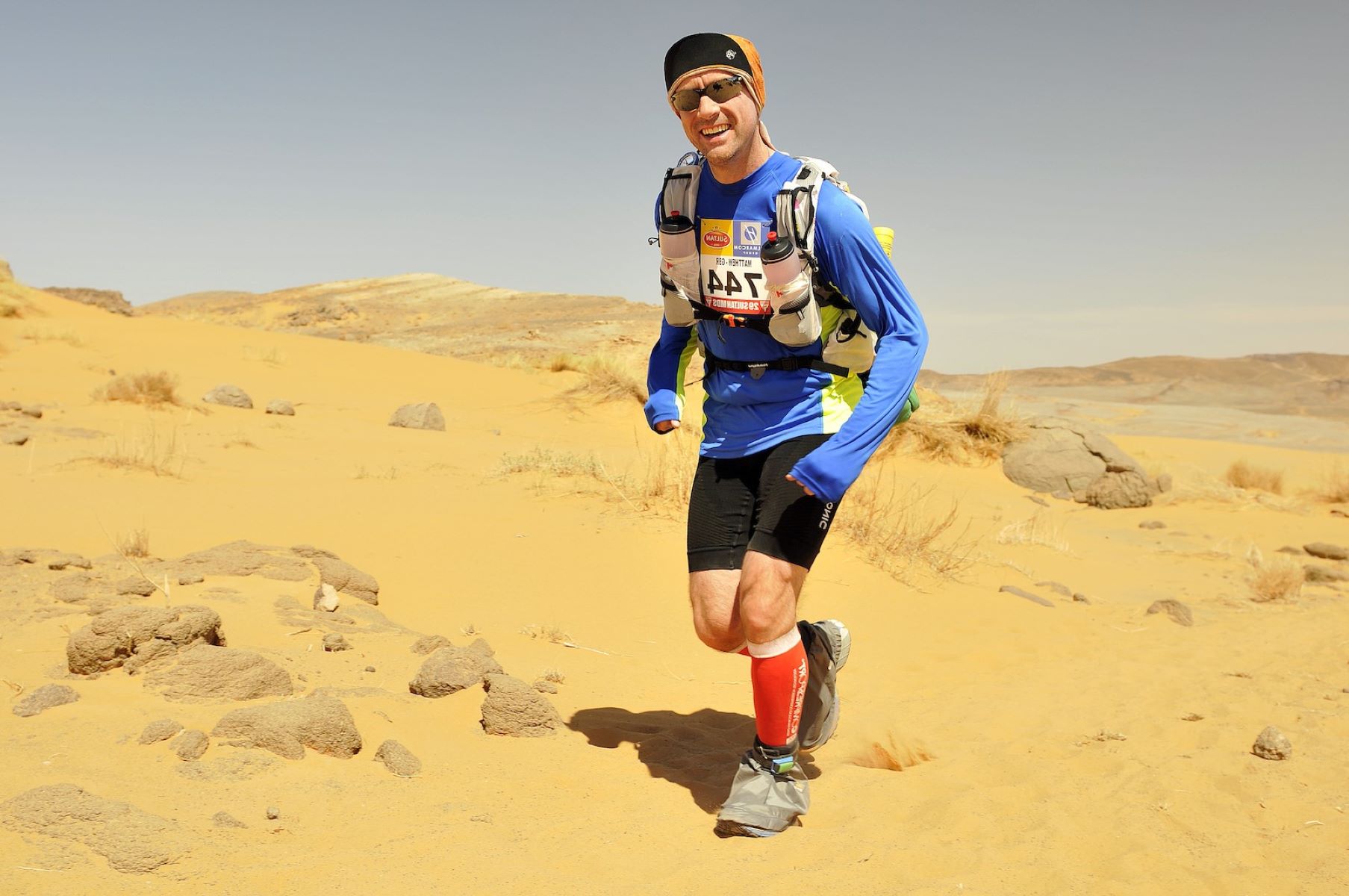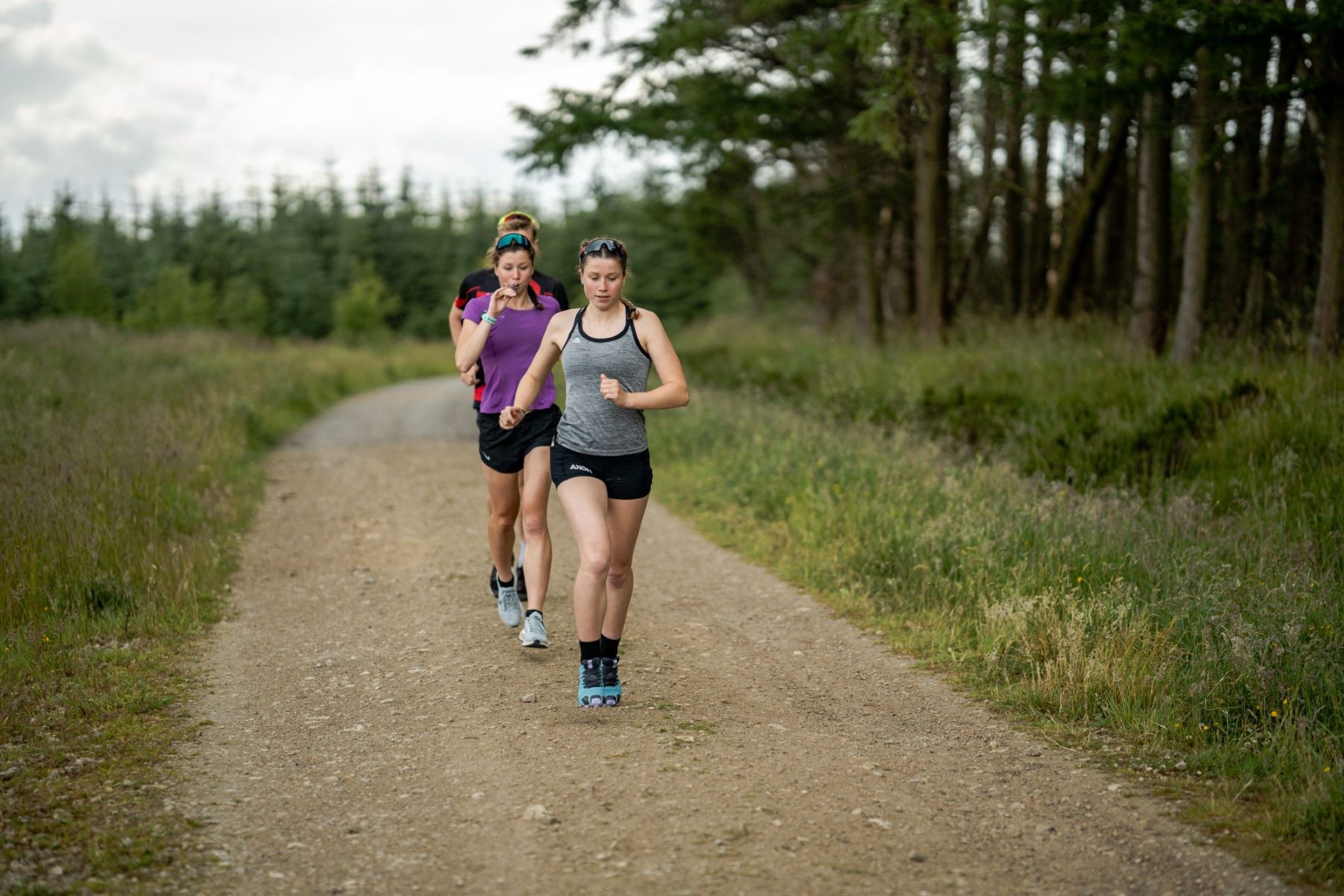Home>Health & Nutrition>MdS Training Blog: Fueling For The Desert


Health & Nutrition
MdS Training Blog: Fueling For The Desert
Published: March 7, 2024
Discover expert tips on fueling your body for the desert with our Health & Nutrition blog. Learn how to optimize your nutrition for endurance in extreme conditions.
(Many of the links in this article redirect to a specific reviewed product. Your purchase of these products through affiliate links helps to generate commission for Therunningadvisor.com, at no extra cost. Learn more)
Table of Contents
Understanding the Demands of Desert Racing
Desert racing, such as the Marathon des Sables (MdS), presents a unique set of challenges for runners. The extreme heat, harsh terrain, and long distances make it essential for athletes to understand the specific demands of this type of race. Endurance and mental toughness are crucial, as runners must navigate through sand dunes, rocky terrain, and scorching temperatures. The physical and mental strain of desert racing requires thorough preparation and a deep understanding of the challenges that lie ahead. Let's delve into the key aspects of preparing for the demands of desert racing.
Importance of Proper Hydration
Proper hydration is absolutely vital when it comes to desert racing. The intense heat and dry conditions can lead to rapid fluid loss through sweat, and failing to replenish these fluids can result in dehydration, which can have serious consequences for a runner's performance and health. Dehydration can lead to decreased endurance, muscle cramps, heat exhaustion, and even heat stroke. To combat these risks, runners must prioritize staying well-hydrated throughout their training and especially during the race itself.
Hydration Tips for Desert Racing:
- Pre-Hydration: Start hydrating well before the race day. Ensuring that your body is adequately hydrated in the days leading up to the event can help offset the fluid loss that will occur during the race.
- Electrolyte Balance: In addition to water, it's crucial to maintain the proper balance of electrolytes, such as sodium, potassium, and magnesium. These minerals are lost through sweat and need to be replenished to support proper muscle function and hydration.
- Hydration Plan: Develop a hydration plan that includes regular intake of fluids during the race. This may involve carrying a hydration pack or ensuring that aid stations along the course will provide adequate fluids.
- Monitoring Hydration Levels: Pay attention to your body's signals and monitor your hydration levels. Dark urine or a decrease in urination frequency can be indicators of dehydration.
By understanding the importance of proper hydration and implementing effective strategies to maintain fluid balance, runners can better prepare themselves for the grueling conditions of desert racing.
Choosing the Right Foods for Endurance
When it comes to desert racing, fueling your body with the right foods is essential for sustaining energy levels and performance over long distances in challenging conditions. Opting for nutrient-dense, easily digestible foods can make a significant difference in how your body copes with the demands of the race. Here are some key considerations for choosing the right foods for endurance in desert racing:
1. Complex Carbohydrates
Incorporating complex carbohydrates into your diet is crucial for providing a sustained source of energy. Foods such as whole grains, sweet potatoes, and quinoa are excellent choices as they release energy gradually, helping to maintain endurance throughout the race.
2. Lean Proteins
Including lean proteins in your diet supports muscle repair and recovery. Opt for sources such as chicken, turkey, fish, and plant-based options like lentils and chickpeas to ensure your muscles have the necessary building blocks for endurance.
3. Healthy Fats
While carbohydrates are a primary fuel source for endurance activities, incorporating healthy fats into your diet can provide a secondary source of energy. Foods like avocados, nuts, and seeds offer a concentrated form of energy that can be beneficial during long races.
4. Fruits and Vegetables
Fruits and vegetables are packed with essential vitamins, minerals, and antioxidants that support overall health and performance. They also contribute to hydration due to their high water content, making them valuable for desert racing where staying hydrated is a top priority.
5. Portable and Convenient Options
When selecting foods for endurance, consider their portability and convenience. Opt for items that are easy to carry and consume on the go, such as energy bars, dried fruits, and nut butter packets. These options provide a quick energy boost without weighing you down.
By prioritizing nutrient-rich foods that support sustained energy, muscle function, and overall well-being, runners can optimize their endurance and resilience during desert racing. Making informed choices about the foods you consume can have a significant impact on your performance and enjoyment of the race.
Pre-Race Nutrition Strategies
Pre-race nutrition plays a pivotal role in preparing the body for the demands of desert racing. It's essential to focus on consuming foods that provide sustained energy, support hydration, and minimize digestive discomfort. Here are some effective pre-race nutrition strategies to consider:
1. Carbohydrate Loading
In the days leading up to the race, prioritize consuming complex carbohydrates such as whole grains, pasta, rice, and oats. Carbohydrate loading helps to maximize glycogen stores in the muscles, providing a readily available fuel source during the race.
2. Hydration Focus
In addition to solid foods, pay close attention to hydration in the days leading up to the race. Aim to consume plenty of fluids, including water and electrolyte-rich beverages, to ensure that your body starts the race well-hydrated.
3. Balanced Meals
Opt for balanced meals that include a combination of carbohydrates, lean proteins, and healthy fats. This approach helps to provide a steady release of energy and supports muscle repair and recovery.
Read more: Running Fuel: The Power Of Smoothies
4. Avoiding High-Fiber and High-Fat Foods
In the immediate hours before the race, steer clear of high-fiber and high-fat foods that can lead to gastrointestinal distress. Instead, focus on easily digestible options such as white bread, bananas, and low-fiber cereals.
5. Timing of Meals
Pay attention to the timing of your pre-race meals. Aim to consume a larger meal rich in carbohydrates and moderate in protein around 3-4 hours before the race start. Additionally, have a smaller, easily digestible snack around 30-60 minutes prior to the race to "top off" energy stores.
6. Familiar Foods
Stick to foods that your body is accustomed to. The pre-race period is not the time to experiment with new foods or supplements, as they may lead to unexpected digestive issues.
By implementing these pre-race nutrition strategies, runners can optimize their energy levels, support proper hydration, and minimize the risk of digestive discomfort during the demanding conditions of desert racing. Proper nutrition in the lead-up to the race sets the stage for a strong start and sets the tone for a successful performance.
Fueling During the Race
Fueling during the race is a critical aspect of desert racing, as it directly impacts a runner's performance, endurance, and overall well-being in the challenging environment. The extreme heat and physical exertion necessitate a strategic approach to maintaining energy levels and hydration throughout the race. Here are key considerations for effective fueling during a desert race:
Read more: Running Fuel: Chicken Vs. Tuna
1. Regular Fluid Intake
Maintaining a consistent intake of fluids is paramount during the race. Depending on the race distance and environmental conditions, runners should aim to consume a specified amount of water and electrolyte-rich beverages at regular intervals. Carrying a hydration pack or ensuring access to aid stations for refills is essential for staying adequately hydrated.
2. Energy Gels and Chews
Portable and easily digestible, energy gels and chews provide a quick source of carbohydrates and, in some cases, electrolytes. These convenient fueling options are designed to be consumed on the go, allowing runners to replenish energy stores without disrupting their pace.
3. Salty Snacks
In prolonged desert races, especially those lasting multiple days, the body's sodium levels can become depleted through sweat. Consuming salty snacks such as pretzels, salted nuts, or crackers can help maintain electrolyte balance and prevent hyponatremia, a condition caused by low sodium levels.
4. Balanced Nutrition
While quick sources of energy are important, it's also beneficial to incorporate balanced nutrition during longer races. This may involve consuming small portions of real food, such as energy bars, bananas, or sandwiches, to provide a more substantial and varied source of nutrients.
5. Listen to Your Body
Each runner's fueling needs can vary, so it's crucial to pay attention to your body's signals. If you're feeling fatigued, lightheaded, or experiencing muscle cramps, it may be an indication that you need to adjust your fueling strategy. Being attuned to your body's needs can help you make informed decisions about when and what to consume during the race.
6. Adapt to Environmental Conditions
In the desert environment, where temperatures can soar, it's important to adapt your fueling strategy to account for increased fluid and electrolyte losses. Being proactive about fueling and hydration can mitigate the risk of heat-related issues and support consistent performance.
By implementing a well-rounded fueling strategy that addresses hydration, energy replenishment, and electrolyte balance, runners can sustain their endurance and optimize their performance throughout the demanding conditions of a desert race. Effective fueling during the race is a key component of successful desert racing and can make a significant difference in a runner's overall experience and results.
Recovery Nutrition for Desert Racing
Recovery nutrition is a crucial component of a runner's post-race routine, especially in the context of desert racing where the body undergoes significant physical and physiological stress. Proper recovery nutrition plays a vital role in replenishing depleted energy stores, supporting muscle repair, and facilitating overall recovery. Here are essential strategies for effective recovery nutrition after desert racing:
1. Rehydration
Following a desert race, rehydration is a top priority. Runners should focus on replenishing fluid losses incurred during the race. Consuming water, electrolyte-rich beverages, and hydrating foods such as watermelon and cucumbers can aid in restoring proper hydration levels.
Read more: Fueling Your Body Before A 5K: What To Eat
2. Protein-Rich Foods
Incorporating protein-rich foods into post-race meals is essential for muscle recovery and repair. Lean sources of protein such as chicken, fish, tofu, and legumes provide the necessary amino acids to support the rebuilding of muscle tissue.
3. Carbohydrate Replenishment
Replenishing glycogen stores depleted during the race is critical for restoring energy levels. Consuming carbohydrate-rich foods such as whole grain bread, rice, and fruits helps to replenish glycogen and kickstart the body's recovery process.
4. Anti-Inflammatory Foods
The physical demands of desert racing can lead to inflammation in the body. Including anti-inflammatory foods such as berries, leafy greens, and nuts can help reduce inflammation and support overall recovery.
5. Nutrient-Dense Meals
Opting for nutrient-dense meals that include a balance of carbohydrates, proteins, healthy fats, vitamins, and minerals can aid in overall recovery and provide the body with essential nutrients for healing and repair.
6. Timing of Meals
Consuming a post-race meal or snack within the first 30-60 minutes after finishing the race is crucial for initiating the recovery process. This window of time is when the body is most receptive to replenishing energy stores and facilitating muscle recovery.
7. Rest and Rejuvenation
In addition to nutrition, allowing the body ample rest and recovery time is essential. Adequate sleep, gentle stretching, and low-impact activities can further support the body's recovery process after the rigors of desert racing.
By prioritizing recovery nutrition and implementing these strategies, runners can optimize their post-race recovery, minimize muscle soreness, and prepare their bodies for future training and racing endeavors. Effective recovery nutrition is a key component of a runner's overall performance and well-being in the aftermath of demanding desert racing.









